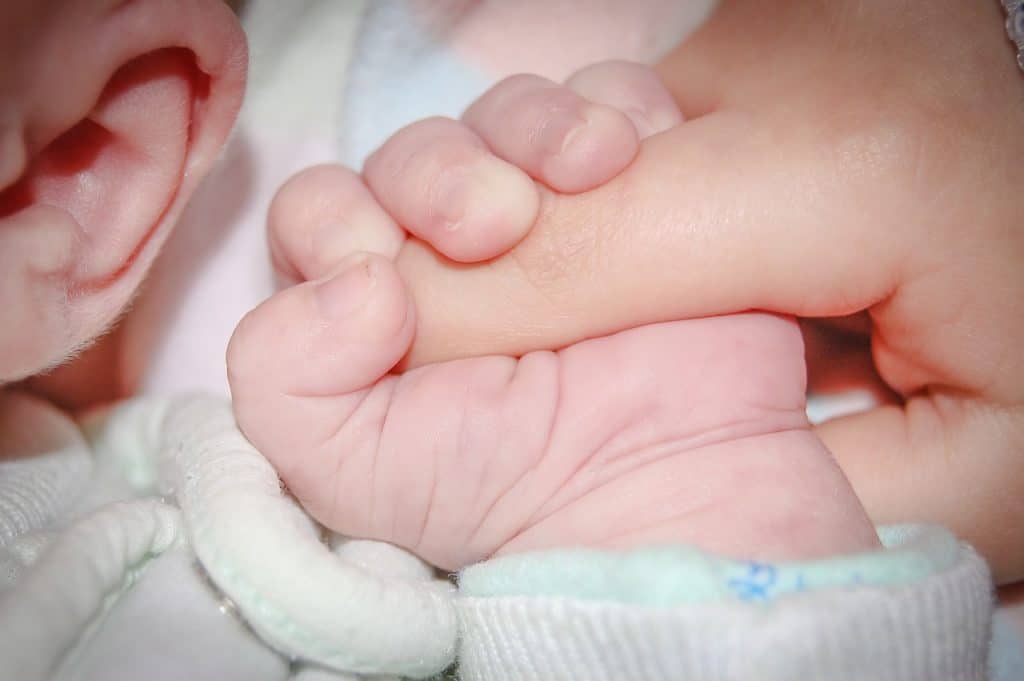
CORD BLOOD BANKING IN INDIANA
What is Cord Blood banking in Indiana?
Cord blood banking is a procedure that has been gaining increased attention in the medical world for its potential to help treat a range of diseases and medical conditions.
In simple terms, cord blood banking involves collecting and storing stem cells from a newborn’s umbilical cord. These stem cells are rich in potential and can be used to help treat a range of illnesses, including certain cancers, blood disorders, and genetic diseases. As a result, many expectant parents are now considering cord blood banking as a way to secure their child’s health for the future.
The process of banking umbilical cord blood involves collecting the blood immediately after birth and sending it to a specialized facility for processing and storage.
The cost of storage can vary depending on the service provider and the length of storage time chosen. There are many factors to consider when deciding whether to bank cord blood, including family medical history and the potential future use of the stem cells.
What is cord and tissue banking in Indiana?
Cord tissue banking involves the collection and storage of the cord tissue, which is the gel-like material that surrounds the blood vessels in the umbilical cord. This tissue is rich in stem cells, which are the building blocks of the body’s immune and blood systems. The stem cells found in cord tissue are different from those found in cord blood, making it a valuable resource for future treatments.
Umbilical cord blood and tissue collection in Indiana?
Umbilical cord blood and tissue are collected immediately after birth via a non-invasive and pain-free procedure.
The umbilical cord is clamped and cut as usual, but instead of discarding the placenta and umbilical cord, they are collected by a trained healthcare professional.
The blood is extracted from the cord using a sterile needle and collected into a specialized bag with anticoagulants to prevent clotting. The tissue is collected by cutting a small piece of the cord and placing it into a sterile container.
Both cord blood and tissue are then transported to a laboratory for processing and storage.
This procedure is a safe and effective way to collect valuable stem cells that can be used for future medical treatments.


Umbilical cord blood and tissue storage near Indiana
Umbilical cord blood and tissue are valuable sources of stem cells, which have the potential to treat a wide range of diseases.
To ensure the preservation of these stem cells, they are collected at the time of birth and stored in specialized facilities.
The most common method of storage is cryopreservation, where the stem cells are slowly frozen and stored in liquid nitrogen at -196°C.
This ensures that the stem cells can be retrieved and used for medical purposes for many years to come. Additionally, many cord blood banks also offer the option to store the umbilical cord tissue, which contains a different type of stem cell that can also be used for medical treatments.
Overall, proper storage of umbilical cord blood and tissue is crucial for their potential use in future medical treatments.
Indiana is a Midwestern state that is known for its basketball, auto racing, and cornfields. The state has a rich history and culture, with famous landmarks such as the Indianapolis Motor Speedway, the State Capitol building, and the Indiana University Memorial Stadium. Located in the heart of the country, Indiana is a hub for transportation and trade, making it an important location for businesses and industry.
The state has many attractions and events for tourists and residents alike, including the Indiana State Fair, the Indianapolis 500, and the Covered Bridge Festival. Indiana is also home to several renowned universities, including Purdue University and Indiana University, which attract a diverse community of students and scholars.
In recent years, Indiana has experienced significant economic growth, with industries such as healthcare, logistics, and advanced manufacturing leading the way. The state is also known for its commitment to innovation and entrepreneurship, with programs and resources available to help start-ups and small businesses succeed.
Overall, Indiana offers a unique blend of tradition and modernity,
1. Indiana is a state located in the Midwest region of the United States.
Indiana is a state located in the Midwest region of the United States. It is bordered by Michigan to the north, Ohio to the east, Kentucky to the south, and Illinois to the west. Indiana has a diverse landscape that includes farmland, forests, and rivers. Its largest city and capital is Indianapolis, which is home to a number of major businesses and cultural attractions. The state is also known for its sports teams, including the Indianapolis Colts and the Indiana Pacers. Indiana has a rich history, with deep ties to agriculture and manufacturing industries, and is home to several prestigious universities and colleges.
2. It has a diverse economy with industries such as manufacturing, agriculture, and healthcare.
Indiana is a state located in the midwestern region of the United States. One of the many strengths of Indiana’s economy is its diversity. The state has a variety of industries that contribute significantly to its overall economic growth. Some of the leading industries in Indiana include manufacturing, agriculture, and healthcare. Indiana has a robust manufacturing industry that produces products such as automobiles, pharmaceuticals, and medical devices. The state is also known for its agricultural industry, producing crops such as corn, soybeans, and wheat. Healthcare is another vital industry in Indiana, with several world-class medical facilities located in the state. The diversity of Indiana’s economy has helped the state maintain a stable economic outlook and create significant job opportunities for its citizens.
3. The state is home to several major universities, including Indiana University and Purdue University.
Indiana is a state in the Midwestern region of the United States that is known for its diverse landscape and rich cultural and economic heritage. The state is home to several major universities, including Indiana University and Purdue University, which are among the most respected institutions of higher learning in the country. Indiana University, located in Bloomington, is a public research university with a student population of over 40,000. Purdue University, located in West Lafayette, is also a public research university with a strong emphasis on engineering and technology. These universities have a significant impact on the state’s economy, as they attract students from all over the country and help to foster innovation and entrepreneurship in the region.
4. Indianapolis, the state capital, is known for its sports teams, including the Indianapolis Colts and the Indiana Pacers.
Indiana’s capital city, Indianapolis, is widely known as a hub of sports entertainment within the state. Home to renowned sports teams such as the Indianapolis Colts, who have enjoyed notable success in the National Football League (NFL), and the Indiana Pacers, who similarly compete at a high level in the National Basketball Association (NBA), Indianapolis is a hotspot for both fans and athletes alike. Alongside these major league teams, there are numerous other professional and collegiate sports programs located throughout the state, supported by engaged and passionate fan bases. Overall, Indiana’s reputation as a sports-centric destination continues to attract visitors from around the globe.
5. The state is also home to several historic sites, such as the Indiana Dunes National Park and the George Rogers Clark National Historical Park.
Located in the Midwest, Indiana is a state known for its rich history and natural beauty. The state boasts several historic sites, including the Indiana Dunes National Park and the George Rogers Clark National Historical Park. The Indiana Dunes National Park is a popular destination for visitors, featuring more than 15 miles of pristine beaches along Lake Michigan, as well as picturesque sand dunes and woodlands. The George Rogers Clark National Historical Park, located in Vincennes, commemorates the crucial role played by the American Revolutionary War hero in the capture of the British-held fort during the U.S. War of Independence. These historic sites, among others, help to preserve Indiana’s unique past and provide educational opportunities for both locals and tourists.
6. Indiana has a rich culinary history, with dishes such as Hoosier pie and pork tenderloin sandwiches being popular throughout the state.
Indiana is a state known for its rich culinary history and diverse food culture. The state has a long-standing tradition of comfort food, with dishes like Hoosier pie and pork tenderloin sandwiches being among the most popular. Hoosier pie, also known as sugar cream pie, is a signature dish in Indiana and has been named as the official state pie. It is made with a rich, creamy filling of sugar, cream, and vanilla, baked in a flaky crust. Another widely enjoyed dish in Indiana is the pork tenderloin sandwich. It is a breaded and fried pork cutlet, typically served on a bun with condiments like mustard, pickles, and lettuce. These dishes are a testament to the state’s culinary heritage and continue to be beloved by locals and visitors alike.
7. The state is known for its diverse natural beauty, with rolling hills, forests, and lakes providing ample opportunities for outdoor recreation.
Located in the Midwestern region of the United States, Indiana is a state known for its diverse natural beauty. The state boasts of an array of landscapes that offer plenty of opportunities for outdoor recreation. From the rolling hills to the dense forests and serene lakes, Indiana’s natural beauty is captivating to both residents and visitors. The state’s terrain has been shaped over millions of years by the forces of wind, water, and ice, resulting in stunning rock formations, picturesque valleys, and stunning waterfalls. The state also has a wide range of state parks and recreational areas that make it a great destination for visitors looking to experience nature at its best. With its diverse natural beauty and numerous outdoor recreational options, Indiana offers something for everyone.
8. Indiana is also home to several cultural institutions, such as the Indianapolis Museum of Art and the Indiana State Museum.
Indiana is a state in the Midwestern United States that is home to several cultural institutions. Among these institutions are the Indianapolis Museum of Art and the Indiana State Museum. Both museums offer visitors a glimpse into the state’s rich history and culture. The Indianapolis Museum of Art is known for its impressive collections of European and American artwork, including works by Rembrandt, Picasso, and O’Keeffe. Meanwhile, the Indiana State Museum has exhibits that showcase the state’s natural history, with displays on topics such as geology, paleontology, and ecology. The museums serve not only as tourist attractions, but also as valuable educational resources for individuals seeking to learn more about Indiana’s cultural heritage.
9. The state has a strong sense of community, with many small towns
Indiana is a state in the Midwestern region of the United States known for its strong sense of community. The state is characterized by a large number of small towns, each with its own unique identity and close-knit community. These small towns play a crucial role in Indiana’s social fabric, providing a sense of belonging and shared identity for residents. This collective ethos extends beyond the small towns and permeates the broader culture of Indiana, contributing to a friendly and welcoming environment throughout the state. As a result, Indiana is a place where individuals and families can develop meaningful connections with others and build a vibrant and fulfilling life.
In conclusion, Indiana is a state that offers a wide range of attractions and sightseeing opportunities for visitors. From exploring the natural beauty of the Hoosier National Forest to experiencing the history and culture of the Indianapolis Speedway, there’s never a shortage of things to see and do. Not only does Indiana have a rich history, but it also boasts a thriving economy with industries ranging from agriculture to technology. Whether you’re a nature lover, history buff, or simply looking for a fun getaway, Indiana is a destination worth considering.

Stem cells, umbilical cord blood and tissue collection in Indiana
Fertility Coach Speaking to a Support Group
Title: “Cord Blood Banking: One More Way to Empower Your Parenthood Journey”
“You’re stronger than you think. And you deserve all the tools available.”
That’s how I usually begin our sessions — whether you’ve just started your fertility treatments or you’ve had a long road of trying, hoping, and sometimes grieving.
Today, I want to introduce a topic that’s often overlooked until the very last moment — and sometimes, too late: cord blood banking.
It might not be the first thing on your mind right now, and that’s okay. But as someone who supports couples and individuals navigating fertility — IVF, IUI, surrogacy, and natural conception after long struggles — I believe in giving you the full picture, not just the pieces people tend to talk about.
What Is Cord Blood?
When your baby is born, some blood remains in the umbilical cord and placenta. That’s cord blood, and it’s a rich source of something extraordinary: hematopoietic stem cells.
These stem cells are like the master builders of your blood and immune system. They can develop into red cells, white cells, platelets — the essentials of human survival.
In medicine, these cells have already been used to treat over 80 serious conditions, including:
Blood cancers like leukemia and lymphoma
Immune system disorders
Sickle cell disease
Certain metabolic and genetic conditions
Why It Matters to the Fertility Community
When you’ve walked a long road to parenthood — one filled with hormone shots, ultrasounds, disappointments, resilience, and hope — you know how precious that child is.
Many of the people I coach say they want to do everything they can to protect their future child. And cord blood banking is one of the few things that can’t be done later. It’s a one-time opportunity — at birth.
For families who’ve conceived via IVF, especially those who’ve done genetic testing (PGT) or who have known hereditary risks, banking your baby’s cord blood can be a valuable layer of biological insurance.
And for those who choose donation, it’s a beautiful way to give life — again — right after bringing life into the world.
Umbilical cord blood and tissue storage near Indiana
Options: Private Banking vs Public Donation
Let me break it down simply:
🧬 Private Cord Blood Banking
You pay to store your baby’s cord blood for your family’s exclusive use.
It’s not cheap — typically $1,500 to $3,000 upfront, plus yearly storage fees.
May be worthwhile if there’s a known risk of needing a stem cell transplant later.
🌍 Public Cord Blood Donation
You donate your baby’s cord blood to a registry.
It’s free.
It may help a child, or even an adult, somewhere in the world who’s waiting on a match.
Both options require advance planning — usually before 34 to 36 weeks of pregnancy — and not all hospitals offer public collection, so it’s good to ask early.
Common Questions From My Clients
“Will this hurt my baby?”
No. Collection happens after birth, after the cord is clamped. It’s completely safe and painless for both parent and baby.
“Can I still delay cord clamping?”
In many cases, yes — moderate delays (30–60 seconds) still allow for collection. If you’re planning extended delays, talk to your provider.
“What if I never use it?”
Then you’ve still given yourself peace of mind — or given someone else a shot at life if you donated. Either way, it’s never wasted.
Empowered Choices, No Pressure
This isn’t about fear. It’s not about “what ifs” that keep you up at night.
It’s about choice.
In a world where you’ve already had to fight for control — over your body, your cycle, your timing — this is one more thing you get to decide. You get to prepare, protect, and give — if you choose to.
I’ve seen clients find immense comfort in knowing they made the decision that felt right for them — whether that was private storage, public donation, or simply learning about it and letting it go.
CORD BLOOD REGISTRY IN INDIANA
What You Can Do Next
Ask your OB, midwife, or surrogate’s provider if cord blood collection is available where you plan to give birth.
Explore private banks early if you’re leaning that way — some offer payment plans or sibling-use guarantees.
Look into public donation — it’s free, easy, and incredibly meaningful.
Discuss it as a team — with your partner, your doula, your doctor — so everyone’s on board.
What is Cord Blood banking in Indiana?
Final Thoughts
You’ve come so far already. You’ve shown strength, perseverance, and love beyond measure. Cord blood banking is just one more way you can channel all that strength into a decision that may change the future — for your child or someone else’s.
I see you.
I support you.
And I want you to have every resource available on this journey.
You’ve got this.
Keywords: fertility coach cord blood advice, IVF and stem cell banking, cord blood for IVF families, PGT and cord blood storage, public donation from fertility journey, emotional support cord blood decision, hematopoietic stem cells fertility, cord blood and infertility community, umbilical cord options IVF, fertility group cord blood explained
Table of Contents
Toggle